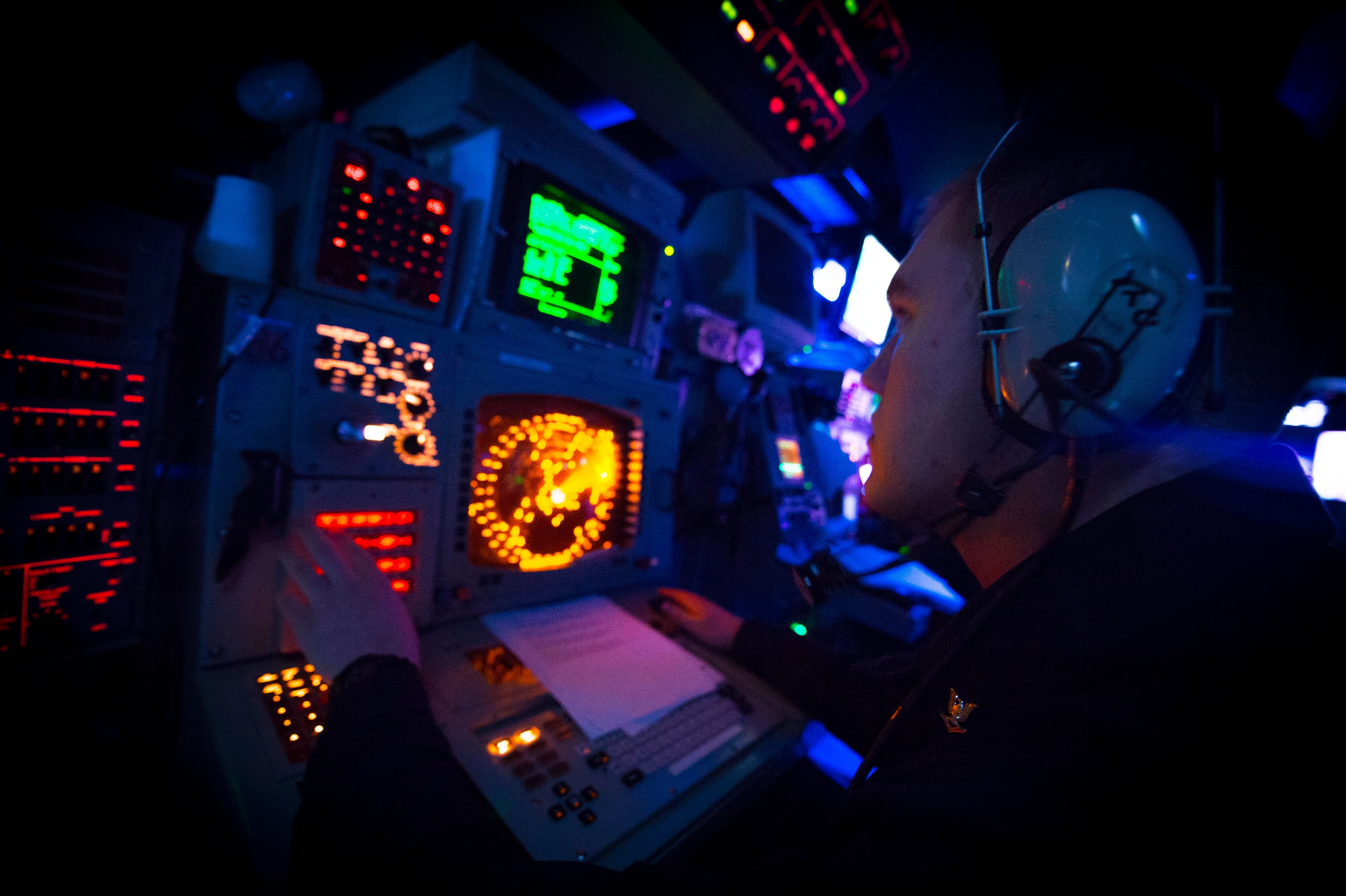
This post has been updated with additional details from the unfunded priorities list.
If the Navy could ask for more funds in Fiscal Year 2024, it would prioritize infrastructure to target potential adversaries for its Project Overmatch initiative, USNI News has learned.
The service’s FY 2024 $2 billion annual unfunded priorities list, obtained by USNI News on Friday, puts $45.3 million in research and development funds to pursue the Maritime Targeting Cell Afloat (MTC-A) as its number one priority.
“Funding the Maritime Targeting Cell Afloat (MTC-A) delivers persistent, multi-domain fusion of national, theater, and tactical sensors and space layer downlink at shore-based and tactical afloat nodes in a contested communications environment,” the document reads. MTC-A
“[d]irectly supports Project Overmatch and Joint All Domain Command and Control (JADC2) by integrating intelligence, sensors, shooters, platforms, and weapons to enhance lethality and survivability, which is a strategic objective of the CNO’s Navigation Plan (NAVPLAN).”
The $2 billion wish list is half of what the Navy sought in its $4 billion unfunded priorities last year. It’s also a smaller dollar amount than this year’s wish list from the Marine Corps, which listed an amphibious warship at the top of its $3.6 billion unfunded priorities list.
As its number two priority, the annual wishlist to Congress includes $49.3 million in research and development funding to update the cockpit systems in the E-2D Advanced Hawkeye through the E-2D Hawkeye Cockpit Technical Refresh (HECTR) program.
“The enclosed Navy Unfunded Priorities List (UPL) identifies executable ways to enhance the President’s Budget with additional investments in FY 2024. The list includes investments in the Navy’s networks to enhance lethality and survivability, improvements in electronic detection and targeting, urgent seismic dry dock projects and modernization of critical infrastructure, and additional aviation and maritime spares to improve Fleet readiness and buy down future risk,” Chief of Naval Operations Adm. Mike Gilday wrote in a letter to the Congressional defense authorization committees.
“Also, the UPL includes a detailed list of executable military construction projects. Funding for these projects would construct laboratories to test and evaluate new capabilities to reduce Fleet vulnerabilities, address installation resiliency issues, and improve shore infrastructure.”
The third priority for the Navy is $186.4 million in research and development funding and other procurement funding for the Zumwalt Enterprise Upgrade Solution, known as ZEUS. The initiative is meant to upgrade the Zumwalt-class guided-missile destroyers with a new electronic weapons suite, radar and anti-submarine warfare capabilities, USNI News previously reported.
By far the most expensive line item is $550 million in shore infrastructure improvements across the Navy.
The second most expensive item is $300 million in operations and maintenance funding to fix three dry docks at Puget Sound Naval Shipyard and Intermediate Facility in Bremerton, Wash., and the delta pier at the Trident Refit Facility in Bangor, Wash. A funding table accompanying the unfunded priorities shows a list of projects the Navy postponed to immediately start overhauling the dry docks, which are at risk for earthquake damage.
“Recently, the PSNS dry docks were decertified due to risk of dry docks stability during a seismic event. Recertifying the dry docks is imperative to continue to maintain submarines,” according to the unfunded list.
The fourth priority for the Navy is a capability called Violet, which the service declined to explain due to classification. The Navy wants $25.6 million across its research and development account, other procurement funding, and operations and maintenance account for the initiative.
With more funding, the Navy would also perform Surface Electronic Warfare Improvement Program (SEWIP) Block III upgrades to future Arleigh Burke-class guided-missile destroyers Richard G. Lugar (DDG-136) and John F. Lehman (DDG-137). The upgrades would cost $208.1 million from the Navy’s shipbuilding account.
Another unfunded priority is to perform SEWIP Block III upgrades on Nimitz-class aircraft carrier USS Harry S. Truman (CVN-75) and future Ford-class carrier Enterprise (CVN-80), which is under construction at HII’s Newport News Shipbuilding. Those upgrades would cost $264 million, also from the Navy shipbuilding account.
The Navy also wants another KC-130J aircraft for $118.8 million and aircraft spare parts for $175 million. Both of those line items are aircraft procurement funding.
“This funds Aviation Consolidated Allowance List (AVCAL) outfitting, improving material range and depth for the F/A-18E/F, EA-18G, E-2, MH-60R, MH-60S, CMV-22, and MQ-4C series aircraft,” the UPL says of the spare parts. “This will close gaps in Carrier Air Wing material support posture by resourcing spare and repair parts from industrial base supply chains for point-of-use during Fleet training and deployment cycles.”
The service’s wish list also includes $100 million in other procurement funding for maritime spare parts.





